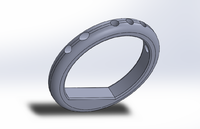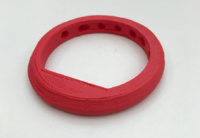Difference between revisions of "MedLit"
m (Protected "MedLit" ([Edit=Allow only administrators] (indefinite) [Move=Allow only administrators] (indefinite))) |
|||
| (2 intermediate revisions by one other user not shown) | |||
| Line 60: | Line 60: | ||
=====Software===== | =====Software===== | ||
| − | We successfully coded a program that took in a delay time and turned on the LED when the time period ended. It is decently efficient and does exactly what we wanted it to do. We also have room to add a feature that will allow the user to decide how long they want the timer to be. Follow this link to see more about the programming: https:// | + | We successfully coded a program that took in a delay time and turned on the LED when the time period ended. It is decently efficient and does exactly what we wanted it to do. We also have room to add a feature that will allow the user to decide how long they want the timer to be. Follow this link to see more about the programming: https://bitbucket.org/medlit/medlit/src |
| − | |||
=====Mechanics===== | =====Mechanics===== | ||
Latest revision as of 12:07, 5 May 2018
Contents
Project Overview
Description
This project will create a way for users to always remember to take time-sensitive medication as well as have that medication readily available. A bracelet that holds a weekly supply of medication will alert the wearer at a certain time each day to take said medication. The problem we are tackling with this device is the issue with certain time sensitive medication, particularly birth control. In the case of birth control, perfect use (taken at same time each day) leads to more than 99% effective birth control, whereas imperfect use is only about 92% effective. This device will help the wearer to reach "perfect use" of their medication.
Group Members
- Lauren Bhambri
- Moira Mulholland
- Anton Salem
- John Fordice (TA)
Objectives
A successful project would include:
- 1. A Wearable bracelet (bangle) that slips on
- wide enough to fit a hand through while being tight enough to stay on
- printed using the 3D printer
- 2. A minimum of 7 compartments that fit most birth control pills
- compartments are accessed through screw on caps
- 3. LED reminder every 24 hours
- LED light goes off at the same time each day, reminding wearer to take medication
- able to turn off light when medication is taken
- Reach Goals:
- motor to vibrate bracelet when timer for medication goes off
- create water resistant bracelet
- LED light indicating power supply of bracelet
- lights up red when battery is low
Challenges
Challenges we foresee for this project include:
Software
- Finding a microprocessor that is the right balance between small, workable, and inexpensive
- Programming the microprocessor and understanding the program needed
- programming a 24 hour timer
Mechanics
- Creating a bracelet design that will efficiently fit all pieces
- 3D printing the bracelet so that we may insert our electronics in it
- 3D printing with two different materials, urethane for the majority of the bracelet and PLA for the cases holding the pills
- Finding a way to check battery level without using too much charge in the process
- designing and printing screw on caps for each pill compartment
Electronics
- connecting battery, ATTiny, and LED lights, and button properly with wires
- making this as compact as possible to have it fit inside the base of the bracelet
Design Milestones and Solutions
Some preliminary work we accomplished includes working with the AtTiny to light an LED, using solid works to design a pill capsule, and designing and printing a preliminary bracelet.
Software
We successfully coded a program that took in a delay time and turned on the LED when the time period ended. It is decently efficient and does exactly what we wanted it to do. We also have room to add a feature that will allow the user to decide how long they want the timer to be. Follow this link to see more about the programming: https://bitbucket.org/medlit/medlit/src
Mechanics
After many different designs, we finally found one that worked for us. It was more ideal to pause the printing halfway through, insert the electronics, and finish printing the top half. This fully enclosed the electronics in the bracelet without having to glue any parts together. It will hold the electronics in sturdier and remove any chance of them slipping out. Check out our tutorial on how to do this at the top of our page.
We also struggled to find a successful design for our pill compartments and caps to ensure that the pill was secured in the bracelet. We initially created caps and compartments with threads to screw the cap on. However, these threads were far too small to print. Instead, we designed a model where the cap has a part sticking out of it that will insert into an alcove within the compartment. You will set it in there and twist it to "lock" the cap in.
Here is the link to our public CAD files: MedLit on GrabCAD
Electronics
We accurately soldered the ATtiny, LED, button, and wires together in a way that fit within our desired bracelet size. The space we had to work with was incredibly small and we accurately created our circuit to be as compact as it needed to be.
Budget
- Microprocessor (atTiny): $2.84
- Tiny AVR Programmer: $19.95
- 312 Battery (24 count): $8.37
- microLED lights (3): Already have
- Flexible resin: Already have (would cost ~$2.25 per mL depending on source)
Total: $31.16
Cost per individual bracelet: $3.83
Future Work
In the future, we would like to make our product customizable in the following ways:
- Additional button that allows the user to set the timer for a specific, changeable amount of time
- Different size pill compartments for different medications
- Color customization
We would also like to add the following designs to our project:
- Additional lights on each compartment so the user needs to know which pill to take at each time
- Vibration alert
- LED alert when battery supply is low
Mass Production
Mass production would be more efficient and cheaper long term to pay for an injection mold which usually cost about $1,000. The other pieces of the bracelet is cheaper when bought in high volumes:
- 120 312 Batteries (2 per bracelet): $33.80
- 300 microLEDs with resistors: $11.86
- 100 AtTinys: $103
- Liquid casting rubber (enough for about 600 bracelets): $149
300 Bracelets would cost about $563.36 which gives a price of $1.88 per bracelet
Safety Concerns
A major consideration of our bracelet is the importance of safety. We are trying to allow women to have better access to their medication, which means that our capsules must be absolutely secure. If our pill capsules were to open or break and a pill is lost there would be serious repercussions. Not only would losing a pill affect the efficacy of pill based birth control, but headaches and nausea could also ensue. Fortunately we worked hard to design the most stable lid possible with the use of 3D printing. Unfortunately, the 3D printed knob that we use to secure the lid in the capsule is likely too brittle for long term use. If we were to actually manufacture this bracelet, we would need a more sturdy material to secure our lids and would need it to pass several stress tests. As we do not want to risk the consumers health.



